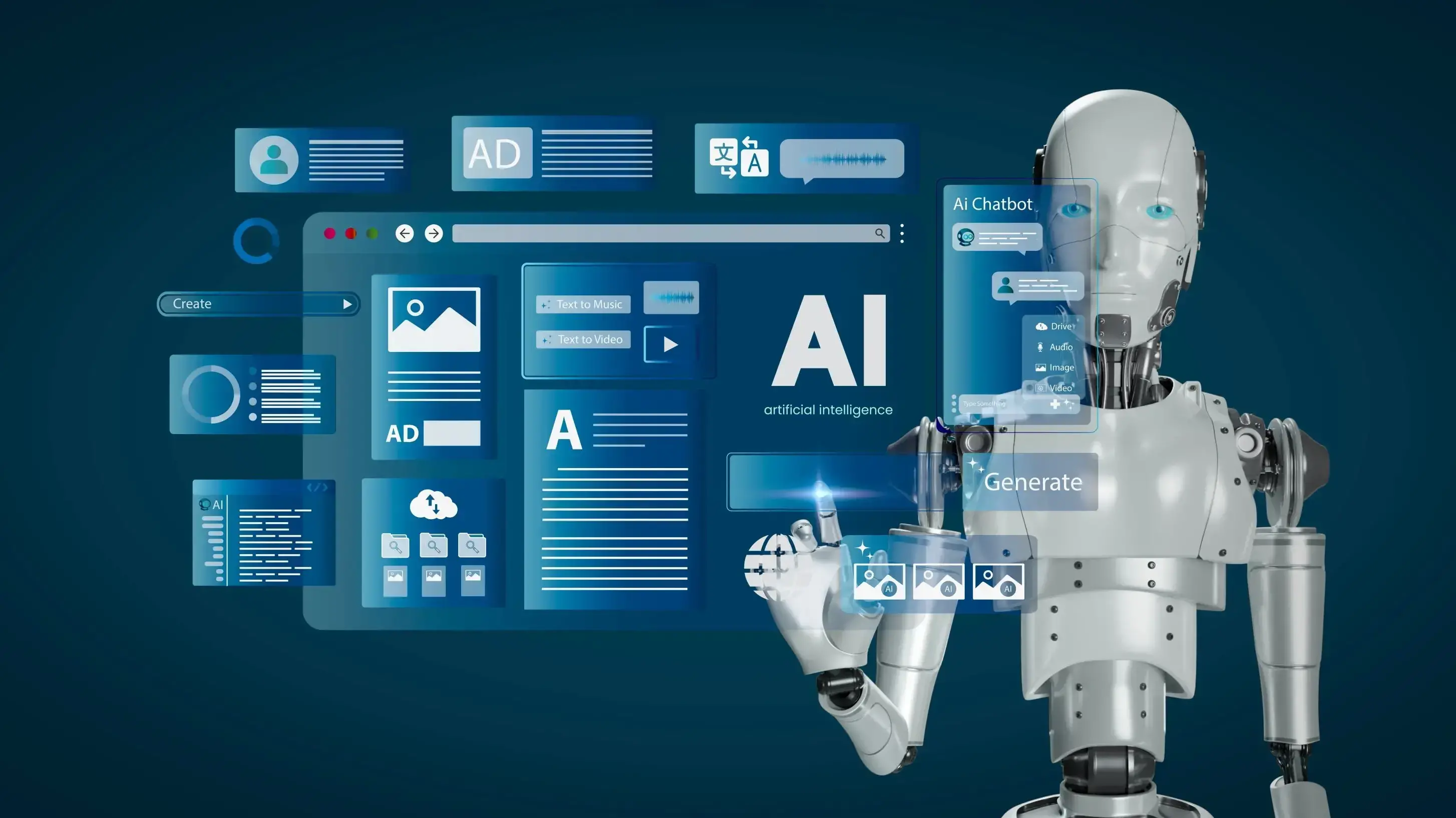It’s no news that artificial intelligence [AI] is taking over. What we mean is that most industries are adapting to the use of artificial intelligence in their products, systems, or processes.
Fun fact: Artificial intelligence has been around since the 1950s. AI systems at the time were used to perform tasks like solving mathematical problems, playing chess, and so on.
Now, AI is all around us, integrated into different areas of our daily activities, like the use of ChatGPT, an AI chatbot that allows humans to have human-like conversations to enable the completion of various tasks, and voice assistants like Amazon’s Alexa.
There are different models of artificial intelligence; however, in this article, we’ll be discussing generative and discriminative artificial intelligence. Before we get to know the differences between these models of artificial intelligence, we must first understand what AI is in general.
What Really is Artificial Intelligence?
The concept of Artificial intelligence dates back to the 1950s, when it began to take shape as a technology that allows computers or machines to think and act like humans. The term “Artificial intelligence” was coined by John McCarthy in 1956, marking the official birth of AI as a discipline.
Artificial intelligence has since evolved with advancements in computing power. Today, we have language models that have enhanced interactions between humans and machines, among other applications.
The benefits of artificial intelligence shine through in various sectors, like;
Medicine: AI algorithms can analyse MRIs and X-rays with high accuracy, which leads to early diagnosis and treatment of diseases or illnesses.
Manufacturing: AI can predict when an equipment is likely to fail, the cause of failure, and what is required to prevent such failure.
Education: AI can be used to create educational content based on students' needs, as well as grade assignments and exams, providing instant results, which makes it easier for teachers and reduces their workload.
There are different types of Artificial intelligence, and they can be divided based on capabilities and functionalities. Examples include:
Based on Capabilities
Narrow AI or Weak AI: Narrow AI is trained to perform narrow tasks that usually exceed what humans can do; however, it cannot perform outside its designated tasks, which means it needs humans to train it.
It’s also known as Realised AI and is considered the only type of AI we have today, while others are theoretical.
General AI or Strong AI: General AI can use learnings and skills to perform new tasks without the need for human training. This means the AGI can learn by itself how to perform a task. This is still a theoretical concept.
Super Intelligent AI: The super-intelligent AI is also a theoretical concept; imagine if it becomes realised, the super-intelligent AI would be able to think, reason, learn, make judgements, and possess cognitive abilities transcending those of human beings. They would be able to have needs and desires, express different emotions, and so on.
Based on Functionalities
AI types based on functionalities that fall under Narrow AI or Weak AI include;
Reactive Machine AI: These are AI systems that are designed to perform specific specialised tasks based on predefined algorithms. They do not learn from past experiences or new data but operate and respond to specific inputs with predetermined responses.
Limited Memory AI: This form of AI can make improved decisions based on past or present events and data to help achieve a desired outcome. An AI chatbot is an example; it relies on limited memory AI to predict the next word or phrase within the context it's generating.
AI types based on functionalities that fall under general AI or strong AI include;
Theory of Mind AI: This type of AI will understand the thoughts and emotions of humans and would be able to deduce these emotions and personalise how it reacts to humans based on their different mental states, emotional needs, and intentions.
AI types based on functionalities that fall under super-intelligent AI include;
Self-Aware AI: This AI would be able to understand its traits and internal states possessing human-like consciousness and emotions, which would lead to forming its own beliefs and desires.
Now that we've understood AI and its types, we can further discuss the different techniques or models of AI, which include generative and discriminative models.
What are Generative AI Models?
Generative AI is a type of artificial intelligence that uses machine learning to generate new data instances based on existing data patterns or involves the use of algorithms that can create content such as text or images autonomously using patterns from existing data.
Generative AI models are systems or algorithms designed to perform generative tasks.
We have engaged or are engaging with generative AI in the form of ChatGPT, which is a popular chatbot and virtual assistant developed by Open AI (an American artificial intelligence research organisation) that uses large language models like GPT (Generative Pre-trained Transformer) designed to understand and generate human-like texts based on patterns learned from training data.
Other examples of common applications include;
NVIDIA: Generating 3D models
AIVA: Generating music composition
TabNine: Generating code snippets
Synthesia: Generating videos, animations, and deep fakes
OpenAI: Generating text, e.g., chatbot responses, articles, etc.
The algorithm used in a generative AI model learns from data by recognizing patterns and relationships. The model is trained using the data to generate new content based on what it learned.
Types of Generative AI
Generative AI can be classified into different types:
LLM (Large Language Models): A large language model is a deep learning model that is trained on large data sets to understand and generate human-like text. Trained by large data on grammar, context, etc., they use knowledge to generate text, which may include responding to a question, filling in the gap, or solving problems.
Diffusion Models: Diffusion models can create new data based on the training data. This means whatever new data it creates would be diverse from what was in the original data set.
GANs (Generative Adversarial Networks): Generative Adversarial networks consist of two neural networks, a generator and a discriminator, that go through adversarial training.
The neural networks compete with each other using deep learning methods to produce accurate predictions. In this case, the generator generates a deep fake, and the discriminator tries to detect if it's real or fake.
Hybrid Models: Hybrid models combine the strength of two different models to create a more powerful and efficient system. For example, integrating text and image models to enhance media generation.
NERFs (Neural Radiance Fields): This is the newest model used for 3D scene representation and rendering. This model transforms 2D models into 3D model objects that can be seen from any angle.
Benefits of Generative AI
Here are a few benefits of Generative AI, they include;
Rapid Design and Prototyping: Architects and product designers can use AI to generate models or build prototypes quickly, as well as produce different models or designs rapidly.
Creativity: Creatives can create ideas by just entering a prompt, and the idea would be brought to life in a jiffy. This can help to speed up the creative process.
Problem Solving: Generative AI can assist in problem-solving, for instance, by providing code snippets to make code more readable.
Entertainment: Generative AI can create virtual environments that seem real, enhancing the experience of gamers.
What are Discriminative AI Models?
Discriminative AI is designed to filter or differentiate various categories or apply class labels of data instances by understanding the decision boundary (line) between the classes.
For instance; when classifying existing images of apples and oranges, the model learns how to recognize the features that separate the apples from oranges and uses the knowledge to classify new images accurately.
Discriminative AI differentiates data from various categories or classes based on input.
Some applications of discriminative AI include:
Face Recognition
Medical Diagnosis
Image Classification
Types of Discriminative AI
There are different types of discriminative AI models, and they include;
Logistic Regression: This is a type of discriminative model used for binary classification tasks. It models the probability of an input belonging to a particular class by using a logic function.
Decision Trees: Decision trees are machine learning techniques used for classification and regression tasks. This model makes decisions by classifying data points and asking questions about features in a flowchart-like structure.
SVMs (Support Vector Machines): This model works by finding the optimal hyperplane (best line) that separates different classes (groups of data) in the input, maximising the distance between the hyperplane and the classes. This separation helps minimise classification errors, ensuring that the model works accurately.
Summary
There’s still a lot of discovery and research to be done on the present state of AI. However, with the introduction of ChatGPT and other AI tools, we can achieve a lot more and faster.
However, we must also recognise that there are also concerns about genuineness and accuracy when it comes to the quality of data. The question of AI being biased arises due to historical or human bias, which may lead to a lack of trust, ethical concerns, etc. Other concerns like privacy and security, and job displacement are also a topic of discussion.
In summary, AI is advancing at a rapid speed, and as time passes, more methods of refining data and providing more intelligent and accurate results are being implemented.
Only time will tell how far this will go and what individuals will be able to achieve with its advancement in the coming years.
Frequently Asked Questions
What is generative AI in the context of the entire process of artificial intelligence?
Generative AI refers to the subset of artificial intelligence that focuses on creating content, such as text, images, or music, autonomously as part of the broader AI process.
Can AI generate entire websites?
Yes, AI-powered tools can generate entire websites based on user preferences and inputs, offering options for customization and optimization for factors like SEO and mobile-friendliness.
How is AI Content Moderation Regulated?
AI content moderation is subject to varying degrees of regulation depending on the region and specific legal frameworks in place. Regulations may address issues like user privacy, data protection, and freedom of expression. However, global standardization in regulation is still an evolving area.
What is an AI landing page generator?
An AI landing page generator uses artificial intelligence to create captivating landing pages in just a few clicks, allowing businesses to generate beautiful landing pages without the need for coding skills.

Jessica Agorye is a developer based in Lagos, Nigeria. A witty creative with a love for life, she is dedicated to sharing insights and inspiring others through her writing. With over 5 years of writing experience, she believes that content is king.
View all posts by Jessica Agorye




















